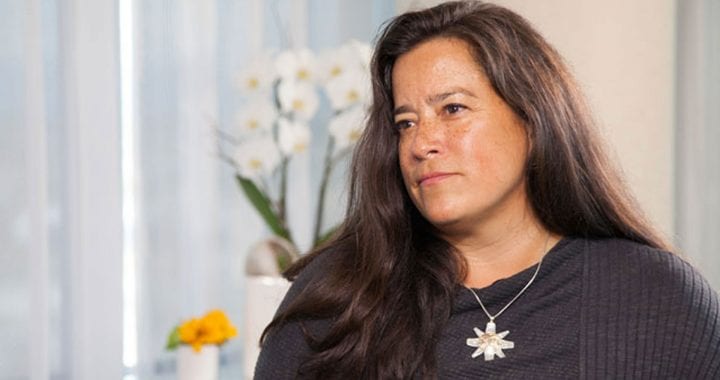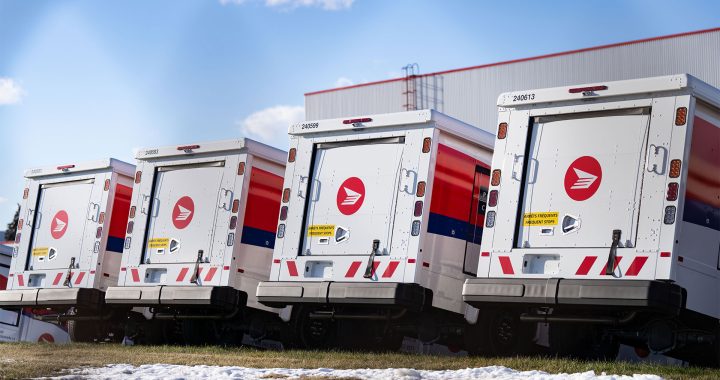Kent Driscoll
APTN National News
When you ask Iqaluit’s Joamie Lyta to explain just how many people live in her small apartment, she needs to stop and count on her fingers.
“Let me count, there’s me, him, my son, my granddaughter, my grandson, my other granddaughter, my nephew, my other son. There’s nine of us,” explained the social housing resident in Iqaluit.
Nine in the day time. At night she often adds two more to her over crowded home.
“My other two brothers, they come to, to sleep at my house, they got no place to stay,” she said. “So sometimes there’s 11 or 12 in my house.”
It sounds extreme, but for Nunavut, this isn’t the exception, it is the rule.
Fifty per cent of all homes in Nunavut are social housing – homes with subsidized rent for people who can’t afford it. Of those social units, 63 per cent are in need of major repairs.
The wait list to get into those beat up homes is long. One in five of all Nunavut residents are on a waiting list for social housing. And just like Lyta’s home, one in three Nunavut homes house someone who would otherwise be homeless.
The unit next to Lyta’s caught on fire, forcing her and her entire family to evacuate. Luckily for them, they were placed in another social housing unit. Until she got the good news, she wasn’t sure what she was going to do.
“I was gonna cry, I guess. Or look for a place to stay a while. They gave this house to me, I was so happy, I was crying when they gave it to me,” said Lyta.
Why does she do it? Why does she take in so many? She was raised that way. “My Mom taught me, when I was a little girl, to take care of them. To make sure you take care of them, or if they don’t have a place to stay. So I do,” she said.
Iqaluit has two realities. Up on the hills overlooking the Nunavut capital, there are private homes that start at $500,000 and can go as high as $900,000. Closer to the downtown, social housing.
That difference isn’t lost on Iqaluit’s mayor, Madeleine Redfern.
“There is definitely a disparity, even in Iqaluit,” said Redfern. “We need more than social housing. Don’t get me wrong, there are over 250 families in Iqaluit alone on the waiting list for social housing. Those are the types of pressures we’re dealing with.”
The Government of Nunavut is scheduled to build 202 housing units over the next two years, in 16 of Nunavut’s communities. Just to get caught up to the current wait list, you would have to build 3,580 homes for 10,500 people.
Nunavut’s Housing Minister George Kuksuk turned down APTN’s request for an interview for this story. His staff said the minister was too busy.
Redfern said she sees how that backlog and wait feeds into all of Nunavut’s numerous medical and social problems.
“It adds to not only pressure for food security, but, school attendance, health issues, there are tremendous other costs because they don’t have enough housing,” she said. “It is a lot of money the government is spending on those other costs, whether it is to deal with health issues,
or people who get into trouble with the law, because they’re hurting themselves or their family because they’re in that pressure cooker situation.”
Of the 202 homes scheduled to be built over the next two years, 17 of them will not be for social housing, they will be for Government of Nunavut staff housing, usually for people brought in from the south for a specific job.
That has the President of Nunavut Tunngavik incorporated (NTI), the group that represents 85 per cent of Nunavut residents who are Inuit, wondering aloud.
Aluki Kotierk said that the 85 per cent doesn’t do nearly as well as the remaining 15 per cent.
Average income for an Inuit family in Nunavut is just $20,000 a year. For a non-Inuit family, $85,000.
“Ninety-nine per cent of the houses in social housing, the tenants are Inuit. Staff housing units are held by non-Inuit. Many of the homes, we hear in the Legislative Assembly, are held vacant, (for jobs) that are to be filled, most often by non-Inuit. Given out great need for Inuit to have housing, one would think that those houses could be built as social housing,” said Koterik.
Kotierk sees some hope. There are Inuit who, with training, could build those homes. By getting paid to build those homes, they could afford to live in them. The missing ingredient is training.
“I’m starting to become of the view, very much, that the money we invest in Nunavut has to be invested in the people of Nunavut,” said Kotierk. “I think that’s the same for many of the issues we face in Nunavut.”
NTI will get their chance to push that trades training. They are sitting on $175 million from a lawsuit against the federal government for not implementing the Nunavut Land Claim. The money came from an out of court settlement, and is earmarked for training.
They are facing a ticking time bomb in Nunavut’s demographics. Nunavut has Canada’s youngest and fastest growing population, and many of those young people are already living in a home with three generations. When those kids are having kids, will there be homes for them, or will the cycle continue?











Worth repeating:
“Nunavut’s Housing Minister George Kuksuk turned down APTN’s request for an interview for this story. His staff said the minister was too busy”.
‘Nuff said!